Association of Chartered Physiotherapists in Sports & Exercise Medicine blog series @PhysiosinSport
At this time of year, runners of all abilities are training for and recovering from organised runs: shorter 5-10km distances to the London Marathon. Thus, it is timely that Tom Goom, Sports Physiotherapist from The Physio Rooms, Brighton and East Sussex and creator of RunningPhysio, answers our questions about gait analysis.
By @tomgoom
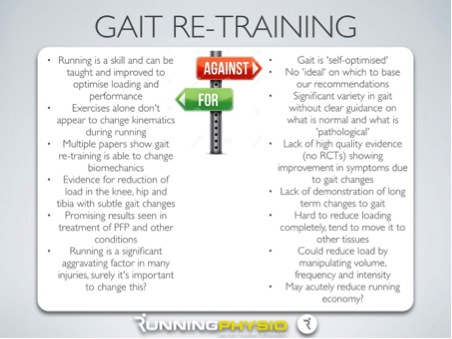
- Who should see a physio for a running gait review?
People most likely to benefit from running gait analysis are those with a running related injury, particularly a persistent one. Of the common running injuries, patellofemoral pain has arguably the most evidence to support gait retraining. Studies have shown reduced patellofemoral load with an increase in step rate and reduction in stride length (Lenhart et al. 2014, Wilson et al. 2014) and very promising results in patients with patellofemoral pain (Noehren et al. 2011, Willy et al. 2012).
At present there is minimal evidence to show that altering running gait can prevent injury or improve running performance. Gait retraining has the potential to improve performance but to date there are very few studies demonstrating this. Some research suggests that runners may self-optimise their gait pattern (Moore et al. 2012). Altering gait from a runner’s self selected ‘normal’ may acutely reduce running economy and have a negative impact on performance. We have to bear this in mind when making gait changes and ensure it feels comfortable for the runner.
Considering the available evidence, we cannot say gait analysis is something all runners should do, or that it will benefit everyone. The gait research evidence base is growing but at present there are few long term studies or high quality RCTs. It’s worth considering the pros and cons as there are a number of arguments for and against gait retraining.
- What unique skills do sport and exercise physios bring to running gait analysis?
Sport and exercise physios are in a great position when it comes to analysing and understanding running gait. Our knowledge of pain, pathology, biomechanics and motor learning allows us to reason through how changes might help an athlete. Physios are skilled at movement analysis which is a huge part of assessing gait. One area where we perhaps could improve is our understanding of the implications for performance. It’s easy, as a physio, to focus on treating pain but with athletes we must keep performance a priority too. Working with other members of the multidisciplinary team can help us provide comprehensive, integrated care.
- How do you do gait analysis? Do you use video runners?
At present I do the majority of my gait analysis using an iPhone 5S or iPad Air to video and the Übersense App. Having experimented with a few options I find this most convenient in a clinical setting. I use a mixture of treadmill and outdoor running assessment (particularly on the running track where possible) depending on the patient and the facilities available. I video from the side, back and front usually at a runner’s preferred speed. Gait analysis is like other assessments, it can be modified to suit the patient. For example, you might examine gait over a range of speeds, when the athlete is fatigued or on an incline or specific surface depending on when symptoms occur.
I start with an overall look at running kinematics, working down from top to toe to identify movements that might be related to the athletes pain/ injury. For example, excessive hip adduction during stance has been associated with patellofemoral pain (Noehren et al. 2012). It’s important not to get too focussed on one area or one part of the gait cycle. Try to be systematic to get a good overview.
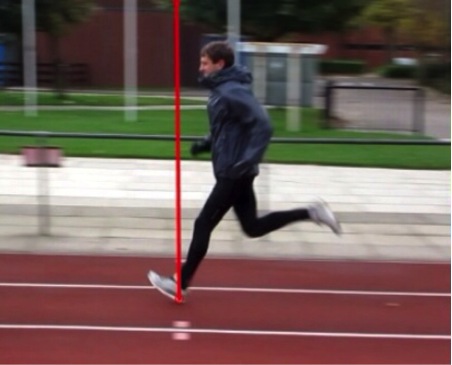
Next I look at specific factors that have been studied in the research and we have a reasonable understanding of their effects on loading. This includes footstrike pattern and transition, stride length, step rate and stride width. All these factors interact with each other and with overall kinematics and kinetics.
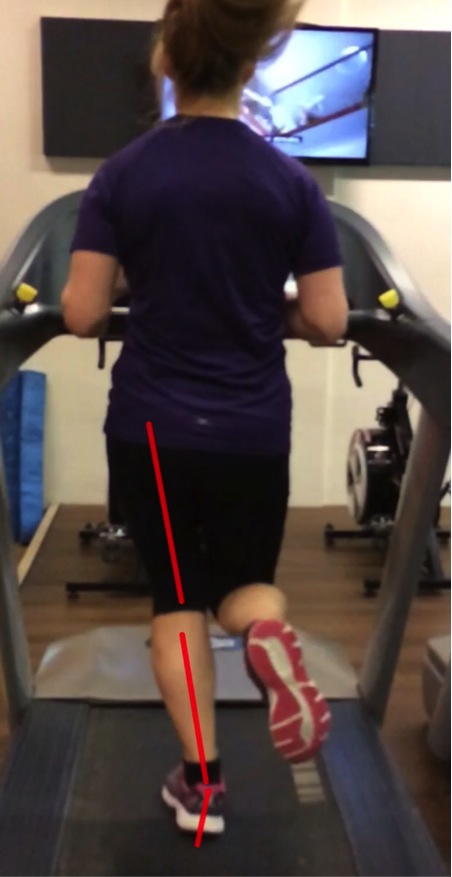
Once you’ve gathered all this information the big challenge is what to do with it! Our analysis is only really as good as our ability to clinically reason through what we find. There are no magic bullets or one size fits all approaches with gait analysis and retraining.
- Advantages/disadvantages of using video/programmes
Some technology is better than others for gait analysis. My preference for the iPhone 5S is because it has a high frame rate (120 frames per second) which allows excellent slow motion analysis. Other phones and cameras can certainly rival this though so it is worth shopping around. A smart phone and app makes a good combination that is easy to use in clinic. Of course we’d all like an 8 camera 3D motion system with force plate and instrumented treadmill but this is far beyond the reach of most clinics! Such systems allow more detailed analysis of kinematics and kinetics but all approaches have some limitations. For example rotational movements (such as hip rotation) are difficult to measure, as is pronation (we might be seeing movement of the shoe rather than the foot and ankle).
- Do you work closely with other sport and exercise professionals? If so, what are the advantages of this?
We can learn a great deal from other members of the MDT. I work with running coaches, S&C coaches, nutritionists, personal trainers and sports physicians wherever possible. I often work with a running coach during a gait assessment. They can help with the performance aspects and provide the athlete with valuable cueing and feedback during training.
Gait anaylsis and retraining can play a valuable role in managing running injury as part of a comprehensive treatment programme. In runners we are often trying to achieve a balance between how much someone runs and how much their body can cope with, balancing loading habits with load capacity.
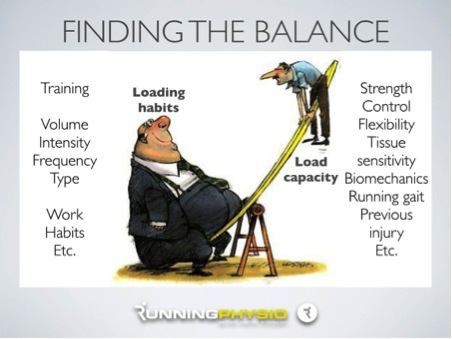
Training structure and progression plays a vital role in injury developement and its management. Training error is thought to be responsible for 60-70% of running injuries (Neilsen et al. 2012). Input from a running coach to provide an appropriate training programme can help ensure successful return from injury, reduce injury risk and achieve performance goals.
Input from an S&C Coach can also be very valuable. Recent research suggests strength and conditioning can reduce risk of overuse injury (Lauersen et al. 2013) and improve running performance (Rønnestad and Mujika 2013).
An integrated care approach that includes gait retraining, appropriate training structure and progressive strength and conditioning can help injury management and prevention by modifying loading habits and improving load capacity.
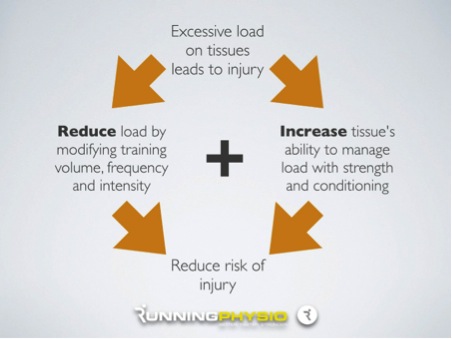
For more information on evidence based running gait analysis and management of running injuries see Tom’s Running Repairs Course.
*******************************************
Tom Goom is a physiotherapist The Physio Rooms, Brighton and East Sussex. He has over 10 years of experience and a very keen runner! Tom started RunningPhysio in March 2012 to help those training for marathons that spring, since then it’s developed into a resource used by runners all over the world. Tom has written for Running Fitness, Men’s Running Uk, and the British Journal of Sports Medicine blog. His work has featured on Kinetic Revolution, Bartold Biomechanics and a host of online sports sites.
If you are a UK physio and not already a member of UK Physios in Sport, check our website for member benefits. Tremendous value on your CPD events, opportunities to network with the leaders in UK sports physio as well as valuable access to 4 sports physio journals including BJSM and IJSPT and PTiS. Benefits begin at £21 pounds for students and <£5 per month for all Chartered Physiotherapists.